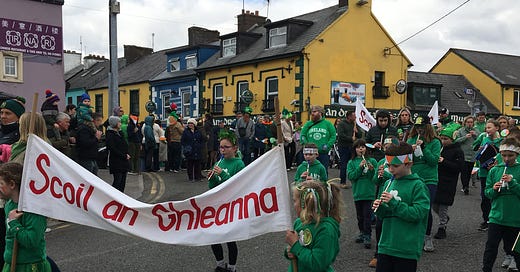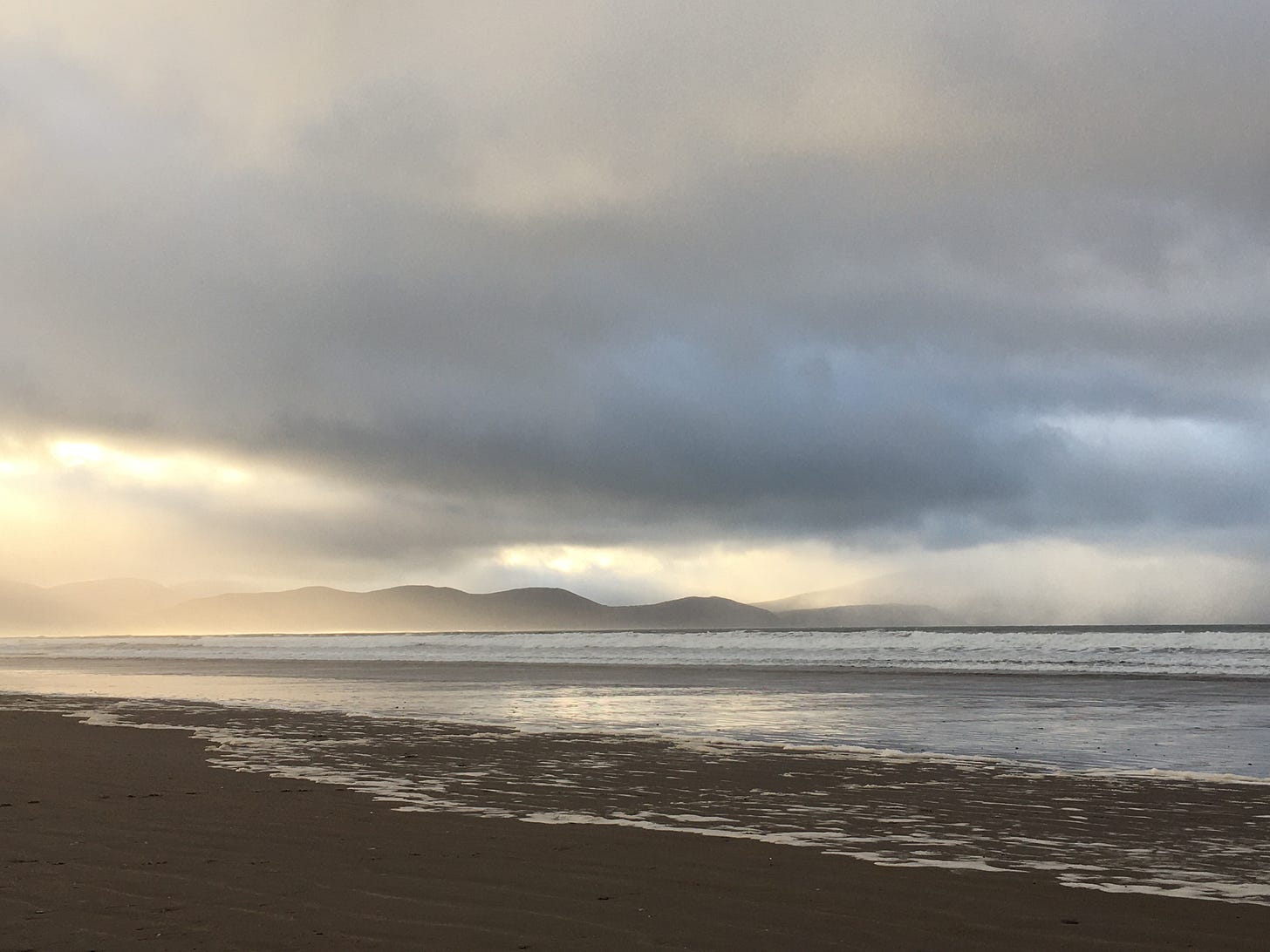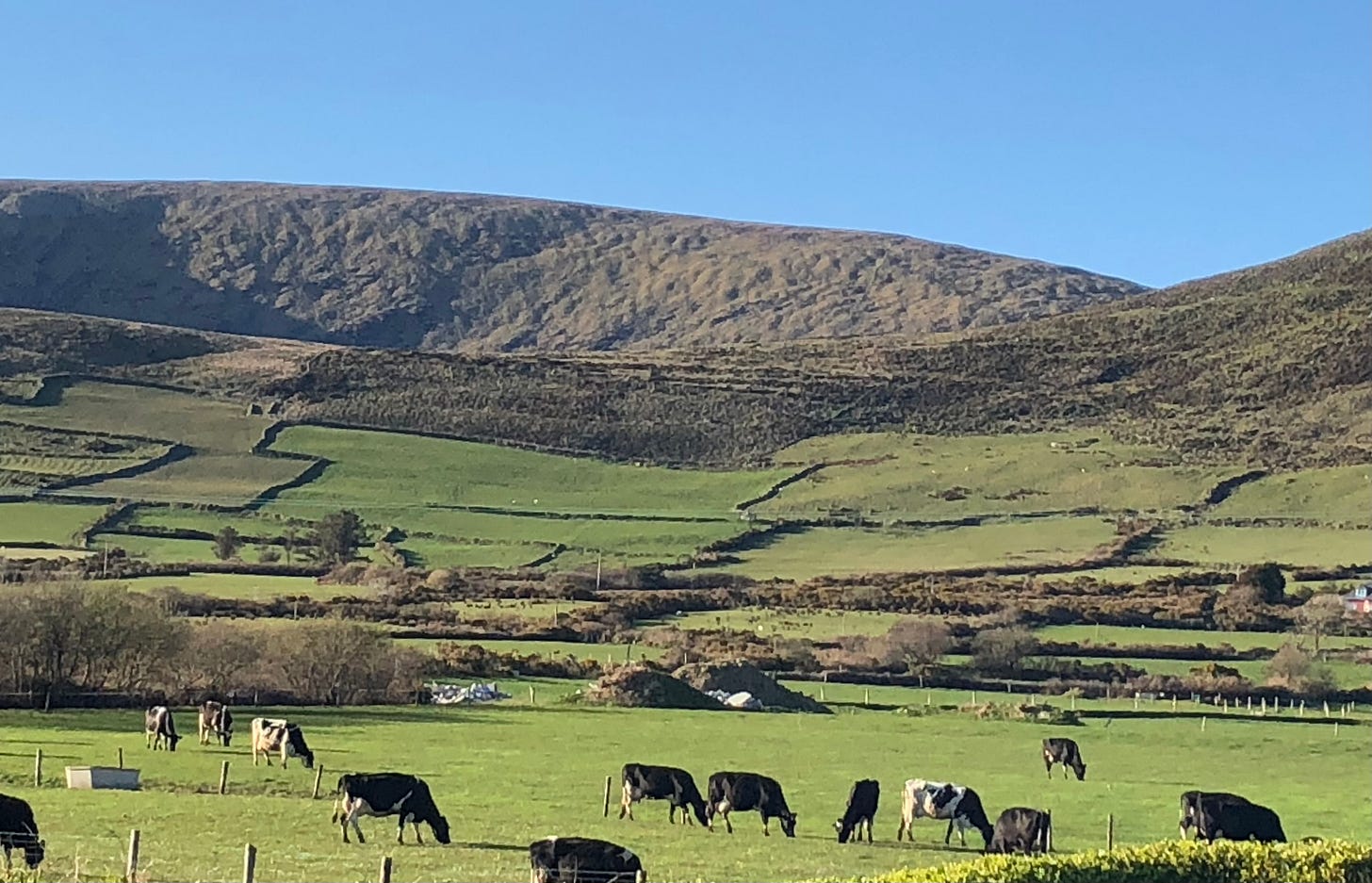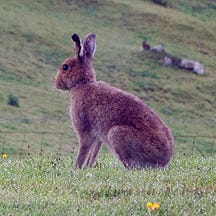March has one main claim to fame in Ireland: St Patrick’s Day. And not just here, either. March 17th is celebrated around the world, from Australia to Argentina, Nigeria to Monserrat. Aside from raucous parades with music, dancing and decorated floats, there’s plenty of feasting and drinking, with revellers wearing shamrock green and generally celebrating being Irish (even if they’re not).
How did this come about? How did the death of a saint from a small island in 461 AD become commemorated so ubiquitously worldwide? Where’s the fuss over St Francis of Assisi, for example? Or St Faith? Or St Rasso?
Granted, there are processions celebrating some saints and martyrs in Catholic countries, but it’s only St Patrick who seems to transcend religion, race and heritage.
The Dingle Pipe and Drum Band lead the St Patrick’s Day parade through Dingle this year. The band also has a 6 am parade, the earliest in the country.
St Patrick’s Day parades as we know them today only began in the 17th century (the first in 1601 in Florida, USA, led by an Irish priest; the first in Ireland itself not until 1903, when it was a bit political).
But the Irish diaspora has spread “Irish Day” all across the globe. So what is it about Ireland that’s so popular? You don’t see huge parades and dressing up to pretend to be French or Peruvian, do you?
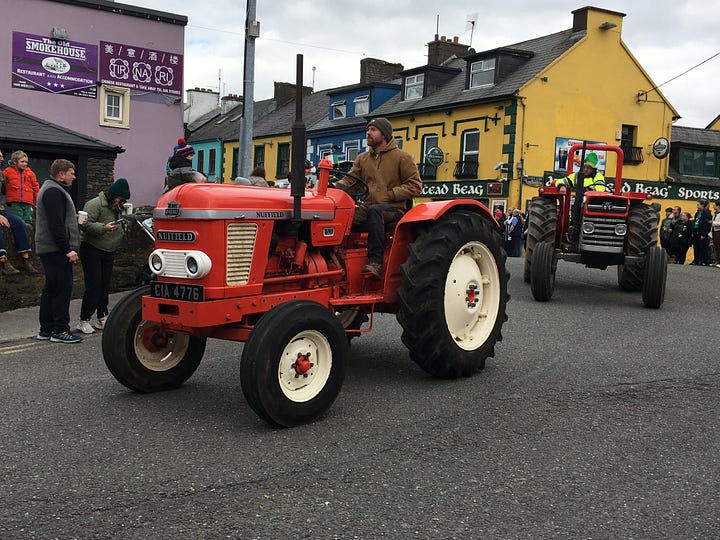
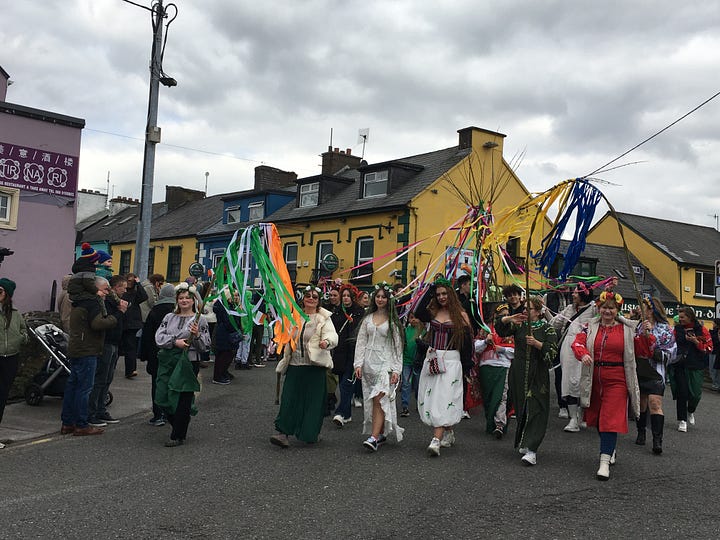
The idea of Ireland in the imagination sometimes makes it seem like a different place from the present.
What do you see when you think of Ireland? Fiddles and whistles, Riverdance down main street. Old cottages and pubs bursting with the craic, the joy, the fun.
Or green fields stretching stitched with speckled stone walls. Blue peaks fading in and out of the mists of myth and poetry. The glimmering, crashing sea.
The idea of Ireland that makes people want to dress up in leprechaun hats and sing drinking songs on St Patrick’s Day is one the tourist board is still determinedly promoting – you only have to visit Dingle to see that. An endless supply of Guinness T-shirts and toffee tins, Aran sweaters and tin whistles. A beaming smile for tourists.
It may not reflect the contemporary Ireland of technology, high fashion, fine dining, diplomacy on the international stage; it may gloss over centuries of grinding poverty still present today in the shadows. And the past a rawness that still haunts the present, just beneath the surface.
But we seem to think it’s what visitors want. A cosy confection wrapped up in humour and cuddly folklore. A Hollywood Darby O’Gill and the Little People still jigging down the street to the pub to the sound of a fiddle and a braying donkey.
Yet, aside from the Disneyesque theme park, there’s another Ireland – one that speaks to the soul. Moon-touched; magical. The Isle of the Blessed in the Western Sea. A place you can only reach if you are not trying. Or in a dream. Or in the next world.
The cosy cottage and the turf fire. The cows in the emerald meadow. The simple life, miles and miles away from the mean streets and the stressful 9 to 5. Colours muted by soft rain. Space to breathe.
Even if we can never find that ideal – even if it never really existed – it’s a powerful draw, particularly if you are trapped in an urban, high-pressure lifestyle.
The Covid pandemic certainly brought that desire into focus. Around the world, people suddenly work up to the harsh craziness of their lives and how much better they felt when more attuned to the natural world.
And Ireland represents that ideal.
Applications for Irish passports from Americans alone are apparently up 200 per cent over the past five years, while real estate agents have long lists of Americans and Britons ready to snap up anything that comes on the market (which is seldom, these post-pandemic days).
And it’s not just the descendants of Irish exiles, either. Dingle, in particular, is a conglomerate of different cultures and beginnings, all united by the landscape, the friendliness of the locals – and, yes, the craic.
So what’s your Ireland? Fiddles and folklore? Or a mystical landscape where magic still happens? We’ve both on offer.

